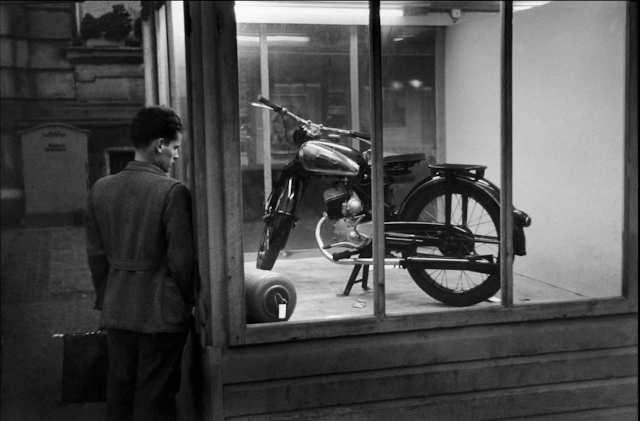The convertible version of the DS was designed by Henri Chapron and introduced in 1958 to rave reviews. The coachbuilder was approached by Citroen to create a production version, which became available in 1960.
Monday, March 31, 2025
Monday Mystery, short wrench
Here's an odd 1 1/2" wrench with an unsually short handle. It must be part of a system that utilizes a slip-on type handle, possibly formalizing the 6 foot pipe-persuader process, so favored by us hacks.
The printed text "DWG ####" and "TLD ####" don't seem to help in a google search.
Someone must have these in their toolbox, thoughts?
Sunday, March 30, 2025
Catalina flying boat with JATO assist
Actually the ones they built in Canada were named Cansos. In the postwar years experiments were made to try to shorten the space required to operate from. Here a Canso of the 408 Sqdn of the RCAF takes off from Golden Lake, Ontario. Seems like cruel and unusual punishment.
Saturday, March 29, 2025
It's maple syrup season
Friday, March 28, 2025
Thursday, March 27, 2025
Making DKW RT-1s
This doesn't look like a staged photo, does it? How about the "showroom " below?
Probably the mostly copied motorcycle ever, becoming the BSA Bantam, Harley Hummer, the Russian M-1A Moskva and the Yamaha YA-1, among others.Bruno Will pliers

Wednesday, March 26, 2025
Cross Transfer-Matic machine
This is a Cross Transfer-Matic machine for automatic machining operations on V-8 engines. Ford introduced this machinery in their Cleveland engine plant in the early 1950s. Though there was a large reduction in required manpower, the equipment was very expensive and inflexible. Short video here.
Tuesday, March 25, 2025
Monday, March 24, 2025
Number series of machine screws
Cardon's Tools is having a fastener sale, wish I needed more small machine screws, but it started me wondering where the # screw series came from. Fractional bolts go down to 3/16 and 1/8" but those smaller sizes are little used. The number series 10-24, 8-32 etc. screws are much more common.
So, it seems the system starts with the base size "0" being .060" and the sizes go up and down from there in .013" increments, so a #6 screw is .138" diameter, .060+ (6 x 013") and #000 is .060-(2 x.013"). Over the years the odd number series have been pretty much discontinued. Seems pretty arbitrary to me but here we are 100 years later..
Where did that protocol come from? I find two references.
In 1907 the American Society of Mechanical Engineers (ASME) defined two series that used Seller's thread, numbering the sizes by gauge numbers from 0 to 30. Who was William Sellers? He was an American machine manufacturer who, when elected to the Franklin Institute in 1864, was instrumental in the adoption of a thread form different than Whitworth and also a graded series of nuts and bolts.
Also, apparently during and after WW1, the powers that be, the ABC (America, Britain, Canada) Council, decided there should be more standardization in threaded fasteners, part of that process was the decision in 1919, that small screws needed better defined, hence this # series. There have been other systems for small screws, but the main standard for screws smaller than #0 is now ANSI/ASME standard B1.10 Unified Miniature Screw Threads.
More than you wanted to know about threads at Wikipedia, here.Jaguar D-Type .
Sunday, March 23, 2025
Lion brand wrench .
Lion brand spanners were made by Armstrong, Stevens & Son Ltd, a stamping and drop forging company located in Birmingham and later Willenden. It was founded in 1835 and in 1920 taken over by Sheffield Steel Products which retained the name. They focused on wrenches, selling under Lion Brand, ASSW and for tool kits; under various automobile manufacturer's names.
 |
| Grabce's Guides |
Saturday, March 22, 2025
First generation Riviera
Ken Sprayson's first motorcycle frame
Thursday, March 20, 2025
Nail puller
Another handy nail pulling tool. This one is marked P. Bryant No 1 Patent 1849. The P. Bryant name comes up in tool searches but I haven't yet found it in a patent search.
 |
| Seen at Cardon's Tools |
Law
This title page comes from the 1928 Butler University yearbook, "The Drift" Just a typical school yearbook but the title page artwork is the very definition of Art Deco. I'm not sure what artist Jane Willis had in mind for the stodgy law section, but I like it.
Other title pages below.


.jpg)




.jpg)











.jpg)


























